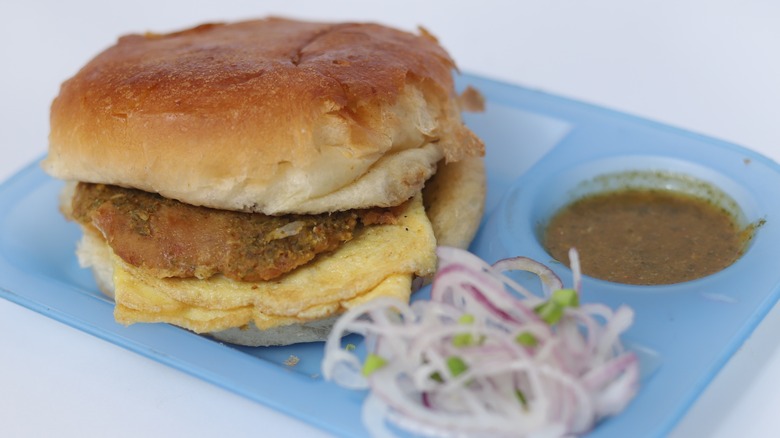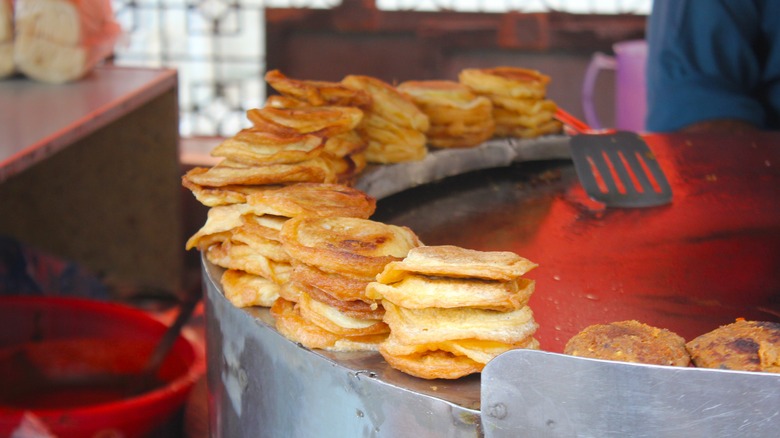Pakistan's Bun Kabab Sandwich Is More Than Just Any Regular Burger
Many culinary cultures have at least one iconic dish that other cultures emulate and adapt. Along with pizza and tacos, burgers are one of the most globally popular fast foods. However, in Pakistan, the bun kebab (also spelled "kabab") not only predates the presence of American-style hamburgers but also represents an authentic Pakistani street food experience that's a part of the national identity. The first bun kebabs date back to the 1950s, a few years after Pakistan's Independence. Bun kebabs are commonly prepared and sold at street carts and remain the cheapest fast food meals enjoyed by all socioeconomic classes.
While the "bun" in bun kebab is borrowed from the English term for a burger's bread, that's the only overlap between the two sandwiches. The patty or kebab sandwiched within the bun along with the condiments places the bun kebab in a category all its own. The original kebab patty consists of a combination of minced lamb or beef, lentils, and a vast array of spices like garam masala, chilies, black pepper, cloves, onion, garlic, and ginger.
Once the patties are formed, they get coated in a frothy blended egg mixture and then fried lightly in oil. Raw onion is the most common topping, and green chutney and raita (not to be confused with tzatziki) are the typical condiments to slather on the lightly toasted buns. They're no-frills, comforting meals that form a core memory of many childhoods and remain a treasured on-the-go meal long into adulthood.
Bun kebab variations and toppings
While American-style burger chains like Mr. Burger, Burger Lab, and Burger Inc. have been mainstays in Pakistan since the '80s and '90s, the bun kebab has persevered as the original form of fast food, always cheaper and always more authentic. In fact, McDonald's attempted to sell a bun kebab at its Pakistani locations to the chagrin of street vendors and local customers alike.
The street food experience remains the same, but the menu has expanded to accommodate all dietary preferences. The original minced meat and lentil patty is the most popular, but you can also find combinations like beef and garbanzos, lentil and lamb, lentil and chicken, or lentil and egg patties. Yet another option is a vegetarian mixture of potatoes and lentils or garbanzos.
Most kebabs still use the whipped egg wash as a key ingredient to bind the patty, ensuring it holds its form while being fried. Along with fresh onion slices, many stalls offer tomatoes, cucumbers, and cabbage as toppings. No bun kebab is complete without chutney, which usually comes as the green, sweet-and-spicy variety made with tamarind, cilantro, mint, green chilies, and sugar. Some stalls offer additional raita (a tangy yogurt-based sauce) to complement the spicy chutney and savory patty. Another popular addition to the bun kebab is a fried egg for extra richness and protein.

